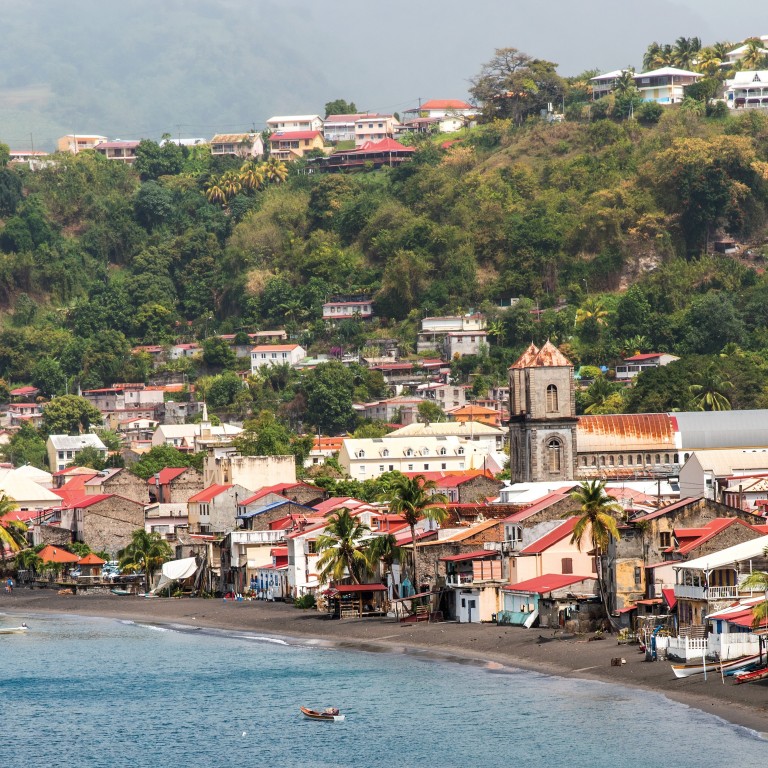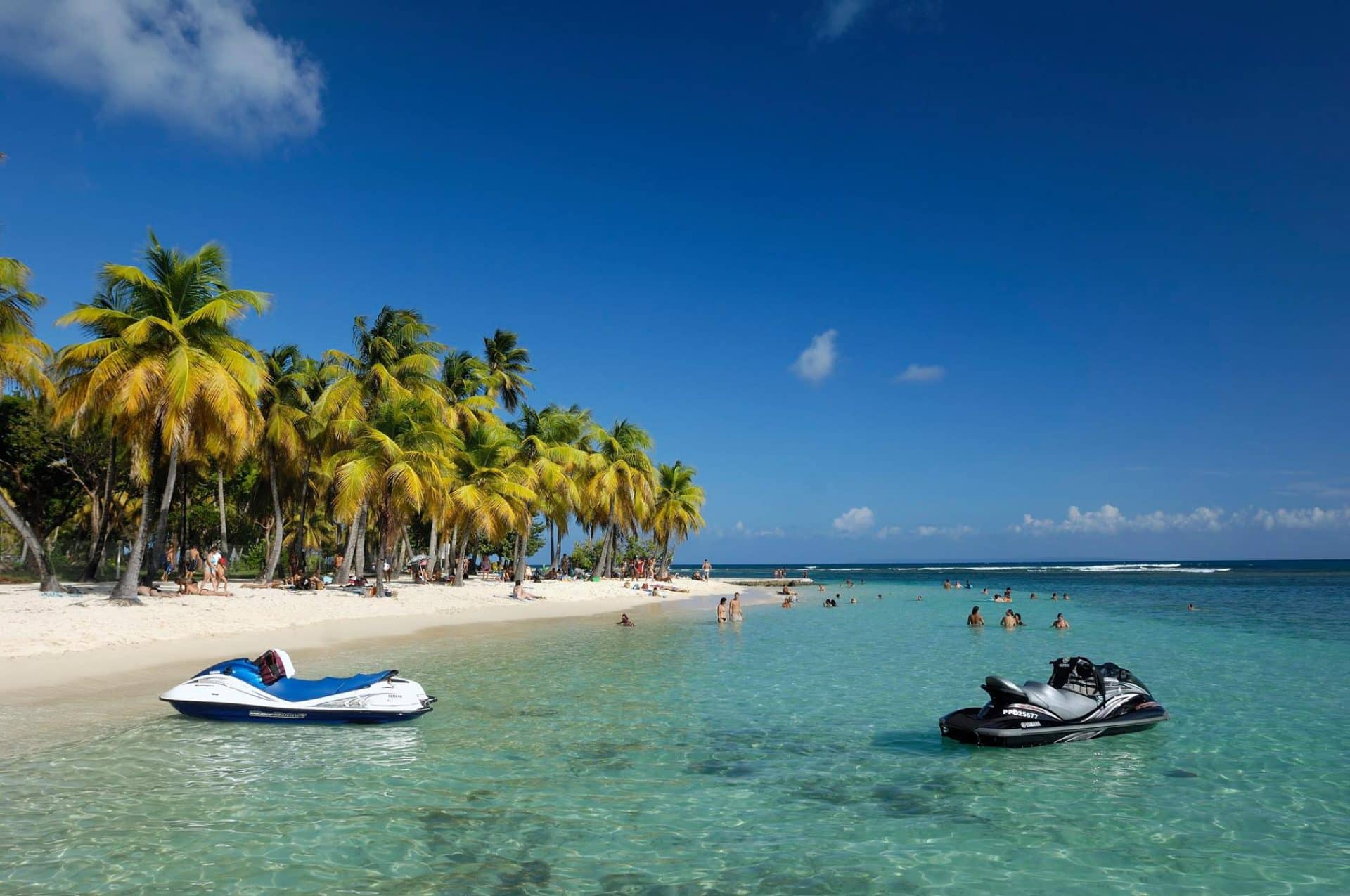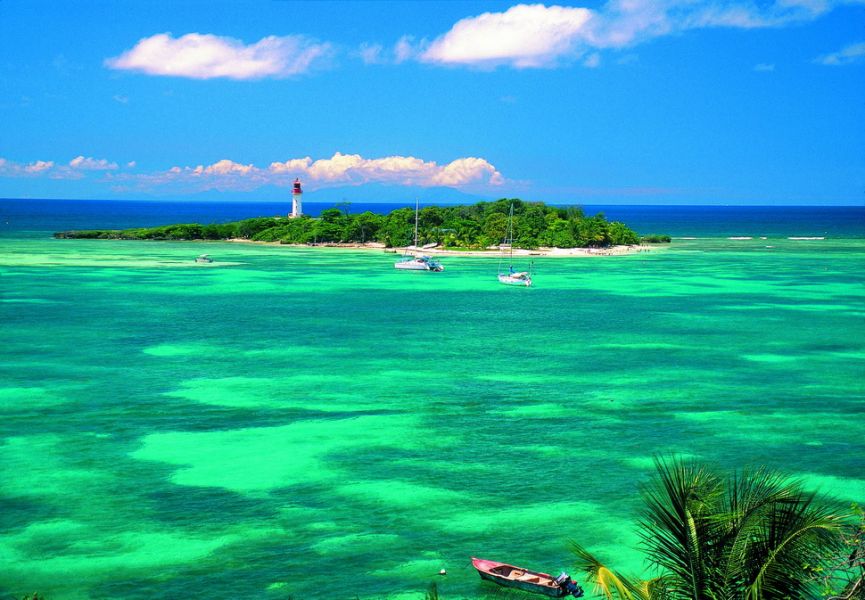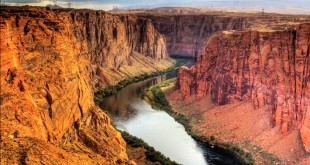Among the islands of the Lesser Antilles of Central America is an island whose name has become famous in the entertainment and tourism sectors, the Island of Guadeloupe. Its coastline borders the glamorous waters of the Caribbean Sea.
On the map, the shape of Guadeloupe Island resembles a butterfly floating on the Caribbean Sea. This means that it is made up of two islands namely: Basse Terre a mountainous island that is highly populated due to its favorable climate, and Grande Terre, a flat and non-humid island that is less populated. Guadeloupe Island has a land area of close to two thousand square kilometers and a population of less than a million. Guadeloupe is home to unforgettable beautiful sceneries, lovely beaches, and unique species. It is rich in heritage and significant historic events.
 Guadeloupe has an interesting history that has left its signs in the form of archaeological sites that are now ideal tourist attractions of the island. In the past before the European invasion of the island in the second century, a native community was known as the Arawak once inhabited the island. Five centuries later, the Caribs came to conquer the Arawak people and occupy the island.
Guadeloupe has an interesting history that has left its signs in the form of archaeological sites that are now ideal tourist attractions of the island. In the past before the European invasion of the island in the second century, a native community was known as the Arawak once inhabited the island. Five centuries later, the Caribs came to conquer the Arawak people and occupy the island.The first European to set his foot into the island was Christopher Columbus, who then met the Caribs community on the island. He named the island after the resemblance of the Virgin Mary in Guadeloupe, Spain. Today, Guadeloupe is a colony territory of France. Its population consists of mainly Africans, mixed-race, and Roman Catholics. Africans occupy the largest portion of the population because of the intense African slave trade that used to take place on the island before the declaration of freedom for the slaves at the Monument of Liberty. Guadeloupe is best known for its poetic and musical talents out-shown by its members.
 Guadeloupe is a fun place to visit with numerous tourist attractions starting from the mainland to the beach points. There are many volcanic features to view like the outstanding La Soufriere Volcano, with an altitude of one and a half meters above sea level. Enjoy the hot springs, rolling hills, and favorite plant species in the tropical forests, the wild animals in the national parks, and large clean waterfalls in the mainland.
Guadeloupe is a fun place to visit with numerous tourist attractions starting from the mainland to the beach points. There are many volcanic features to view like the outstanding La Soufriere Volcano, with an altitude of one and a half meters above sea level. Enjoy the hot springs, rolling hills, and favorite plant species in the tropical forests, the wild animals in the national parks, and large clean waterfalls in the mainland. There are cultural tours to take tourists through the history of the island and visit the archaeological spots on the island like the Valley of the ancient Caribs and the Monument of Liberty where the end of African slavery was first celebrated. The beach is fascinating with white sands and beautiful waters of the Caribbean Sea. There are various fun activities at the beach such as diving into the Caribbean Sea, surfing, basking in the sun, snorkeling and boat riding. Guadeloupe’s beaches are a paradise that no one would regret taking a trip to the place.
There are cultural tours to take tourists through the history of the island and visit the archaeological spots on the island like the Valley of the ancient Caribs and the Monument of Liberty where the end of African slavery was first celebrated. The beach is fascinating with white sands and beautiful waters of the Caribbean Sea. There are various fun activities at the beach such as diving into the Caribbean Sea, surfing, basking in the sun, snorkeling and boat riding. Guadeloupe’s beaches are a paradise that no one would regret taking a trip to the place. Guadeloupe has many well-packed, luxurious hotels for accommodating tourists visiting the island. They offer varieties of unique cultural dishes and normal dishes. Hospitality in Guadeloupe is highly rated and this is the reason for many tourists visiting the island day in day out.
Guadeloupe has many well-packed, luxurious hotels for accommodating tourists visiting the island. They offer varieties of unique cultural dishes and normal dishes. Hospitality in Guadeloupe is highly rated and this is the reason for many tourists visiting the island day in day out.At Bas du Fort and on the edge of greenery, the beaches are bordered by hotels and are man-made. The beach of Gosier is charming, although short and narrow, but presents a great view onto the island of Gosier which faces it. On the road to Sainte Anne, the beaches of the Pointe Canot, the Salines, or Petits Havre are particularly favored by the locals. Towards Sainte Anne, the coral barrier contains the waters in sumptuous lagoons whose shallow depths favors transparency and exceptional gradations of blue.
 Beaches from out of your dreams with palm trees nonchalantly bent over turquoise waters, like at the Caravelle Beach, unanimously considered one of the most beautiful beaches on the island, the municipal beach, or the Bois Jolan beach. In Saint François also whose proximity to the coral barrier offers magnificent beaches, from the Anse to the bark at the Pointe des Châteaux.
Beaches from out of your dreams with palm trees nonchalantly bent over turquoise waters, like at the Caravelle Beach, unanimously considered one of the most beautiful beaches on the island, the municipal beach, or the Bois Jolan beach. In Saint François also whose proximity to the coral barrier offers magnificent beaches, from the Anse to the bark at the Pointe des Châteaux. Tourist Destinations World Travel Guides
Tourist Destinations World Travel Guides


